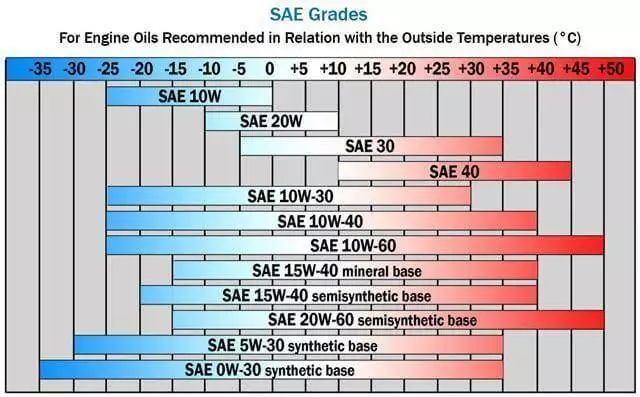Have you ever wondered what SAE stands for in motor oil? The actual meaning of SAE is not entirely important when choosing motor oil for your engine. However, the SAE ratings deserve more attention.
SAE Is A Rating System For Measuring Motor Oil Viscosity
Yes, that’s right. The Society of Automotive Engineers or SAE developed a scale to compare motor oil viscosity grades for engines and transmissions.
The SAE was founded in 1905 and is a globally active association for engineering professionals in a multitude of industries. This includes automotive, commercial vehicles, and aerospace applications. The goal of the SAE is to develop engineering standards and solve technical design problems as gasoline-powered vehicles became mainstream in the early 1900s.
More...
How Do I Read The SAE Rating In My Motor Oil?

It depends on the type of motor oil. There are two general types: single-grade and multi-grade oil. Since single-grade oils are not advisable for modern cars, we’ll focus on multi-grade types of motor oil.
The SAE rating of multi-grade oil consists of XX W-Y where:
- XX refers to the viscosity of the oil at cold temperatures
- W refers to Winter
- Y refers to the viscosity of the oil at hotter temperatures
For example, a multi-grade oil with an SAE rating of 15W-40 means the oil remains thick or has higher viscosity at cold and hot temperatures compared to 0W-40. On the other hand, 0W means the oil has a lower viscosity and flows easily when cold compared to 15W.
This means 15W-40 motor oil is better suited for warmer climates since the higher number keeps the oil from becoming too thin as the temperature rises. Meanwhile, 0W-40 oil is great for winter or colder weather since the oil can protect the engine during harmful cold starts (since it flows easily/less thick/has lower viscosity).
How Did The SAE Test The Viscosity Rating Of Motor Oil?
Easy. The number before W indicates the oil’s flow at 0 degrees Fahrenheit or -17.8 degrees Celsius. The lower the number, the less the oil will thicken when exposed to colder temperatures. If you live in places with prolonged cold weather, choosing a thinner motor oil (0W-20 or 5W-30 for example) will offer better protection against cold starts and friction.
The second number after the W represents the viscosity of the motor oil measured at 212 degrees Fahrenheit or 100 degrees Celsius. On the other hand, this number indicates the resistance of the oil to thin out when exposed at higher temperatures. If you live in tropical weather with hot summers, using a motor oil with higher viscosity will better protect against heat damage. For example, 10W-40 is better for hot weather than 10W3-30 simply because 10W-40 will resist thinning as the engine reaches higher operating temperatures.
Back in the old days, automotive engines were running on single-grade oil. But now, both post-modern and modern cars equipped with OBD2 are engineered to run using multi-grade motor oil.
What Are The Types Of Multi-Grade Oil?

When buying motor oil, there are two things to check: the SAE viscosity rating and the type of multi-grade oil.
Conventional or mineral oil is the most affordable option and is available to purchase in bulk at most auto stores. Mineral oil conforms to API and SAE standards but contains less or zero additives. This means conventional oil is prone to breaking down and needs to be drained/changed more frequently.
Synthetic blend or semi-synthetic motor oil is a pricier option but tends to last longer than mineral oil. Synthetic blend motor oil is essentially mineral oil mixed with synthetic oil. The result is a motor oil that resists breaking down much better than conventional motor oil.
Full-synthetic or fully-synthetic motor oil is the priciest option. However, synthetic motor oil has a longer service life and offers more miles of protection. Generally speaking, mineral oil needs to be changed every 2,000 or 3,000 miles. But if you go for synthetic motor oil, the oil change intervals can go as long as 5,000 to 8,000 miles.
Which Motor Oil Is Best For My Car?

The answer remains the same: check the owner’s manual. Not all vehicles are made the same, which means the motor oil in your friend’s Toyota Camry may not be ideal for a MINI Cooper and vice-versa.
It’s easy to get swayed by television and online advertisements. But the best thing to do is to check the owner’s manual. In some cases, the prescribed motor oil is stamped in the engine bay or in the engine oil cap above the motor.
Here’s another tip for you: if the required engine oil is fully-synthetic, do not use mineral or semi-synthetic oil to save a couple of bucks. For all you know, you are causing major engine damage by not using the right motor oil in your car.
Always follow the SAE viscosity rating and the type of motor oil to ensure your engine remains in tip-top shape.
